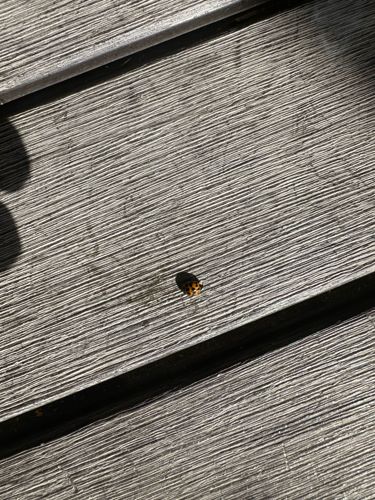Ladybug (or Ladybird beetle)
Scientific Name: Coccinellidae (various species)
Order & Family: Coleoptera, Coccinellidae
Size: Typically 1-10 mm (0.04-0.4 inches) in length.

Natural Habitat
Gardens, agricultural fields, meadows, forests, and other areas with vegetation and prey insects.
Diet & Feeding
Primarily predatory, feeding on soft-bodied insects like aphids, scale insects, mites, and mealybugs. Some species also consume pollen, nectar, or fungi.
Behavior Patterns
Ladybugs undergo complete metamorphosis (egg, larva, pupa, adult). Larvae are voracious predators. Adults often overwinter in sheltered locations, sometimes aggregating in large numbers. They are known to emit a foul-smelling, yellowish fluid (reflex bleeding) as a defense mechanism when threatened.
Risks & Benefits
Ladybugs are overwhelmingly beneficial insects, particularly in agriculture and gardening, where they serve as natural pest control agents, reducing populations of plant-damaging insects. Some invasive species, like the Asian lady beetle (Harmonia axyridis), can become a nuisance by entering homes in large numbers during autumn and may bite if handled roughly, though their bite is generally harmless. They can also impact native ladybug populations through competition.
Identified on: 11/13/2025